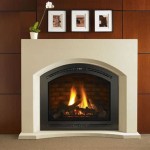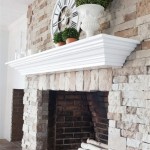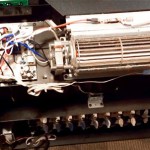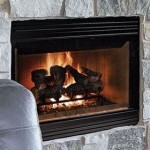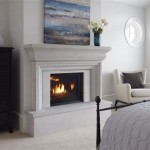Crafting Your Own Warmth: A Guide to Building a DIY Wood Fireplace
The allure of a wood-burning fireplace is undeniable. It offers not only a source of warmth and comfort but also serves as a focal point, adding a touch of rustic charm to any living space. While professional installation is a common route, building a DIY wood fireplace is a feasible project for homeowners with some construction experience and a willingness to learn. This article provides a comprehensive overview of the considerations and steps involved in constructing a safe and functional DIY wood fireplace.
Before embarking on this project, thorough planning and research are paramount. Building codes and safety regulations related to fireplaces vary significantly by locality. It is imperative to consult with local building authorities to obtain the necessary permits and understand the specific requirements for fireplace construction in the area. Neglecting this step can result in costly rework or legal complications.
Furthermore, it is crucial to have a solid understanding of basic construction principles, including masonry, carpentry, and ventilation. Familiarity with power tools and safety protocols is also essential. If you lack experience in these areas, consider taking introductory courses or seeking guidance from experienced professionals before proceeding.
Key Point 1: Planning and Design Considerations
The design phase is critical in ensuring the fireplace’s functionality and aesthetic appeal. Several factors need careful consideration during this stage:
*Fireplace Size and Location:
The size of the fireplace should be proportional to the room it will occupy. A fireplace that is too large can overwhelm the space, while one that is too small may not provide adequate heat. The location should be chosen strategically, considering factors such as traffic flow, existing structural elements, and potential fire hazards.Ideally, a fireplace should be centered on a wall, away from flammable materials such as curtains and upholstered furniture. The area around the fireplace should be clear of obstructions to allow for proper ventilation and access for cleaning.
*Firebox Design:
The firebox is the heart of the fireplace, and its design significantly impacts its efficiency and safety. The firebox should be constructed of fire-resistant materials such as firebrick, which can withstand the extreme temperatures generated by burning wood. The dimensions of the firebox should be sufficient to accommodate the size of wood being burned.The back wall of the firebox should be angled slightly inward to reflect heat into the room. The floor of the firebox, known as the hearth, should be raised to provide a more comfortable viewing height and to prevent embers from rolling out. A smoke shelf, located above the firebox opening, helps to prevent downdrafts and ensures that smoke is directed up the chimney.
*Chimney Design:
The chimney is responsible for venting the smoke and combustion gases away from the living space. The chimney must be properly sized and constructed to ensure adequate draft. The height of the chimney should be sufficient to clear the roofline and any nearby obstructions.The chimney should be constructed of fire-resistant materials such as brick, stone, or metal. It should be lined with a flue liner, which protects the chimney structure from the corrosive effects of combustion gases. A chimney cap should be installed to prevent rain, snow, and debris from entering the chimney.
*Material Selection:
The materials used in the construction of a wood fireplace must be fire-resistant and durable. Firebrick is the preferred material for the firebox, while brick, stone, or concrete blocks can be used for the surrounding structure. Mortar used to bond the materials should be specifically formulated for high-temperature applications.The hearth should be constructed of non-combustible materials such as stone, tile, or concrete. Wooden mantels and surrounds should be installed with adequate clearance from the firebox opening to prevent them from catching fire. Insulation should be used to protect combustible materials in the wall from the heat generated by the fireplace.
Key Point 2: Construction Process: A Step-by-Step Guide
Once the design is finalized and the necessary materials are gathered, the construction process can begin. The following steps outline the general procedure for building a DIY wood fireplace:
1.Foundation:
A solid foundation is essential to support the weight of the fireplace. The foundation should be constructed of concrete and extend below the frost line to prevent shifting due to freezing and thawing. The dimensions of the foundation should be slightly larger than the footprint of the fireplace. 2.Firebox Construction:
The firebox is typically constructed of firebrick, using a heat-resistant mortar. The walls of the firebox should be built up in layers, ensuring that each brick is securely bonded to the adjacent bricks. The back wall should be angled slightly inward to reflect heat. 3.Smoke Chamber:
The smoke chamber is the area above the firebox where the smoke and combustion gases collect before entering the chimney. The smoke chamber should be constructed of fire-resistant materials and should be smoothly tapered to facilitate the flow of smoke. 4.Chimney Construction:
The chimney can be constructed of brick, stone, or metal. It should be lined with a flue liner to protect the chimney structure from corrosion. The chimney should extend above the roofline and be capped to prevent the entry of rain and debris. 5.Hearth Construction:
The hearth is the non-combustible area in front of the firebox. It should be constructed of materials such as stone, tile, or concrete. The hearth should extend a sufficient distance from the firebox opening to protect the flooring from sparks and embers. 6.Surround and Mantel (Optional):
The surround and mantel are decorative elements that can enhance the aesthetic appeal of the fireplace. They should be constructed of non-combustible materials or installed with adequate clearance from the firebox opening.Key Point 3: Safety Precautions and Considerations
Safety is paramount when building and operating a wood fireplace. The following precautions should be observed at all times:
*Building Codes:
It is crucial to adhere to all local building codes and regulations related to fireplace construction. Failure to comply with these codes can result in fines, rework, and potential safety hazards. *Fire-Resistant Materials:
Only fire-resistant materials should be used in the construction of the firebox, smoke chamber, and chimney. Using combustible materials in these areas can create a significant fire hazard. *Proper Ventilation:
Adequate ventilation is essential to ensure that smoke and combustion gases are properly vented away from the living space. The chimney should be properly sized and constructed to provide sufficient draft. *Carbon Monoxide Detectors:
Carbon monoxide (CO) is a colorless, odorless gas that can be produced by burning wood. CO detectors should be installed in the home to alert occupants to the presence of dangerous levels of CO. *Regular Maintenance:
The fireplace and chimney should be inspected and cleaned regularly to remove creosote buildup. Creosote is a flammable substance that can accumulate in the chimney and cause a chimney fire. A professional chimney sweep should be hired to perform this task at least once a year.Operating a wood fireplace requires responsible practices. Never leave a fire unattended, and always ensure that a fire screen is in place to prevent sparks from escaping. Use only seasoned wood, as green wood produces more smoke and creosote. Dispose of ashes properly in a metal container with a tight-fitting lid. Keep flammable materials away from the fireplace, and ensure that smoke detectors are functioning properly.
In conclusion, while a DIY wood fireplace project presents a significant undertaking, careful planning, adherence to safety guidelines, and a solid understanding of construction principles can result in a rewarding addition to any home. The warmth and ambiance provided by a wood-burning fireplace can enhance the comfort and enjoyment of the living space for years to come.

Diy Fireplaces How To Make Your Own Fireplace Easily Cozy Pallet Furniture

How To Build A Fireplace Red Cottage Chronicles

Diy Rustic Fireplace Mantel The Cure For A Boring

Diy Fireplace Makeover Wood Slat

Diy Pallet Fireplace Rustic Fireplaces

Diy Fireplace With Electric Insert Angela Marie Made

Diy Fireplace Mantel Designatedspacedesign Com

How I Built A Faux Modern Farmhouse Fireplace Anderson Grant

How To Build A Faux Fireplace With Storage Addicted 2 Diy

Diy Fireplace With Electric Insert Angela Marie Made


